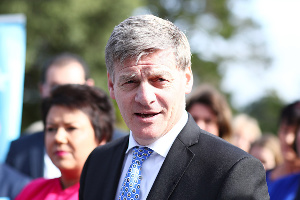
The high inflation war will be won, says Kiwibank economists Jarrod Kerr, Mary Jo Vergara and Sabrina Delgado. “It’s just a matter of assessing the cost, or economic damage, of the war,” Kerr says.
Kiwibank says the RBNZ’s plan is simple: lift interest rates to a point where they hurt, and hurt a lot, and then wait for inflation to be stifled and restrained to something more stable, like 2%.
The economists say although households and businesses are feeling the pinch, the RBNZ wants to see the full force of rapid rate rises over the past 18 months. And it expects further falls in economic activity.
“To tame the prickly inflation beast, monetary policy needs to be left at restrictive levels, for longer. The RBNZ notes ‘a prolonged period of subdued activity is required to reduce inflationary pressure.’ Talk of upside risks near-term, mainly on inflation, give way to bigger downside risks over the medium term”, Kerr says.
“It’s a tricky dance. But monetary policy settings today are set for economic outcomes ahead with policy lags of around 18 months. And in 18 months’ time, the world could be in a much weaker space.”
He says the RBNZ’s OCR statement has reduced market traders’ perceptions around near-term rate hikes. Hikes are not (yet) necessary.
Higher OCR expectations declining
This has also been pointed out by Westpac, which despite predicting a .25% rise in the OCR in November for some months, now thinks the RBNZ is less likely to follow this path.
Westpac chief economist Kelly Eckhold says market pricing for about a 60% chance of a 25-bps tightening at the November monetary policy statement looks too hawkish and is now adjusting.
He says key factors that will determine the probability and size of a November tightening will be the outcome of the third quarter consumer price index (CPI), due three days after the general election this month, and the third quarter labour market reports due on 1 November.
However, the RBNZ retains confidence the required amount of slowdown will ultimately occur in light of recent pointers such as the quarterly business sentiment and manufacturing index indicators.
“Notably, concerns around increased house prices are not as prominent as in our own assessment with the Monetary Policy Committee wanting to see how house prices evolve in the summer period when more activity usually occurs,” Eckhold says.
“Medium term growth and inflation pressures are seen as being held in check by the continued slowing of the global economy and China in particular, given that commodity prices continue to be lower than last year.”
Eckhold sees the latest RBNZ OCR statement as more dovish than the bank’s expectations.
“We anticipated the RBNZ would craft a statement that broadly endorsed current market pricing for around a 50/50 chance of a 25 bp rate rise in November. This statement suggests that that view was too hawkish. Not communicating any further concern on the inflation outlook means the hurdle for a November tightening remains high.”
He says while Westpac continues to see a 25bp rate hike in November at this stage, it must be a lower probability than previously thought.




Comments
No comments yet.
Sign In to add your comment